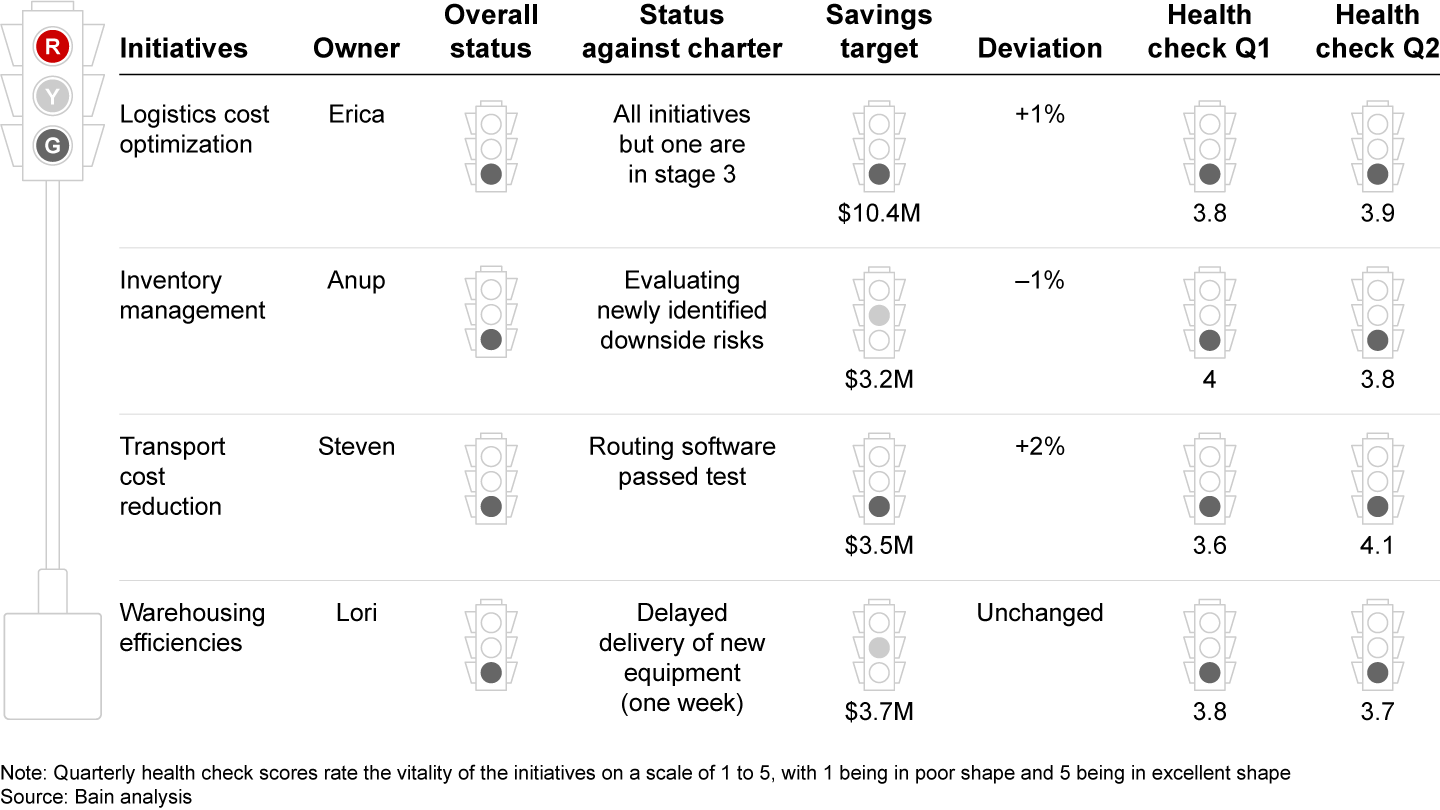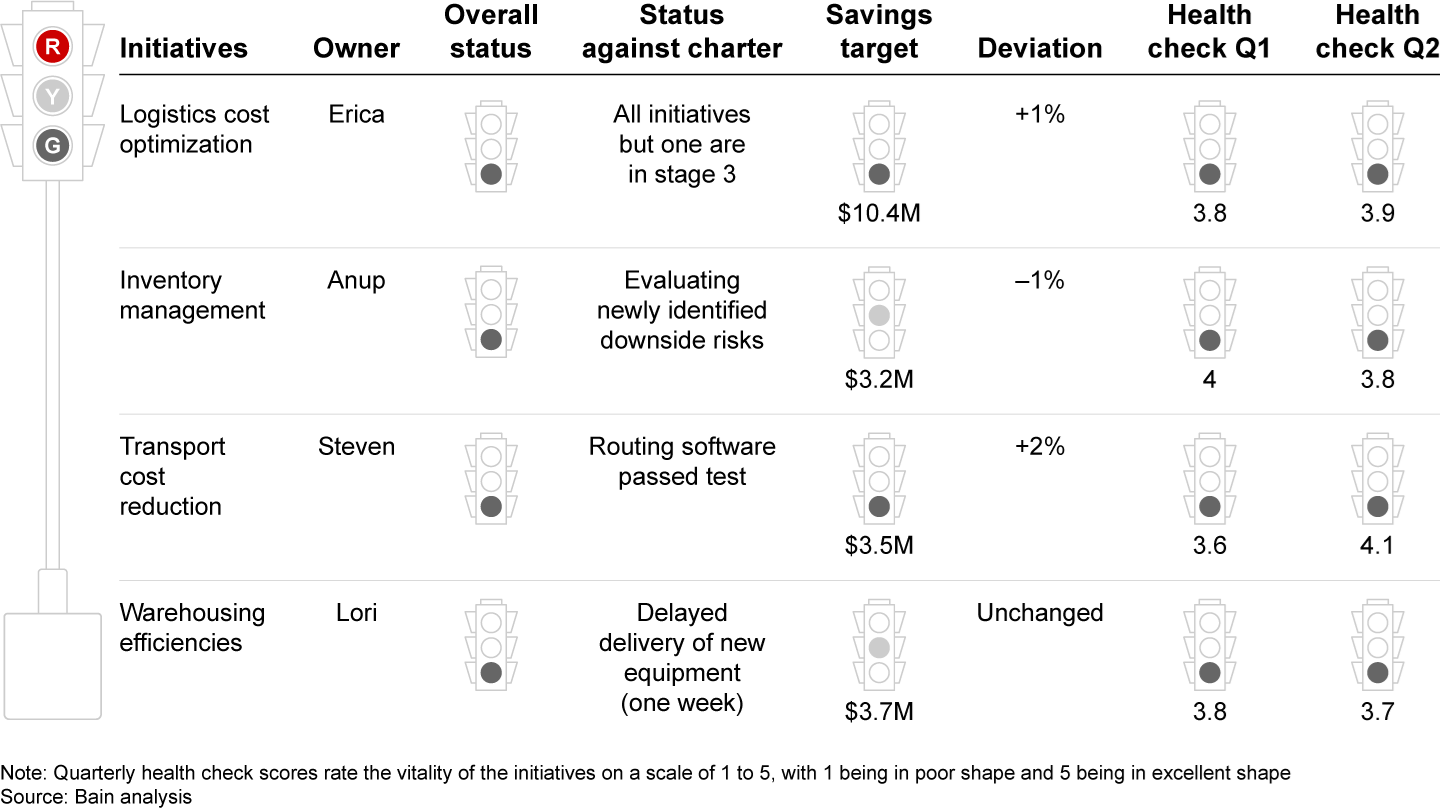Managing Change Blog
The senior executive of a global industrial conglomerate felt a knot of apprehension form in her stomach. She was looking at the latest report from the team in charge of a major change program. The dashboard was a sea of green, indicating that every part of the program was humming along just fine (see Figure 1). Nothing to worry about. But this executive knew better, and in fact, she was downright agitated. “How do I find out what is really going on with our program?” she wondered. “I feel I’m the only one probing, and all I get in response is some version of ‘yes, ma’am.'"


The executive who shared this experience with me recently is a veteran of many corporate change initiatives. So she knows that most change efforts don’t deliver the intended results or are recalibrated at some point to meet much more modest and diluted goals. Behind all the happy-face reporting, she knew instinctively that trouble surely lurked. Eventually, the truth would emerge, but maybe too late to take appropriate action. Why wouldn’t anybody tell her the truth?
My friend’s problem is a common one. In many companies, employees go to extraordinary lengths to avoid having to communicate bad news to the higher-ups. This fear can motivate well-intentioned employees to do their darnedest to make sure there is no bad news. But it also leads to those false green signals.

Change Management Insights
Change management has been around for decades, but more than 70% of change efforts fail. Bain’s Results Delivery® insights help companies to predict, measure and manage risk, starting on day one.
Change programs are especially prone to the false greens syndrome. To track progress across multiple initiatives, the program leader asks for some kind of reporting system—after all, if you can’t measure it, it won’t happen. The program office whips up impressive-looking dashboards with greens, yellows and reds to show what’s on track and what’s not. Team members are assigned responsibility for indicators, and the added transparency gives everyone confidence in the process.
Then, something miraculous happens. Within a couple of reporting cycles, the dashboard turns all green! On the surface, this bodes well for the program. Progress must be terrific. But beneath the surface, as my executive friend suspected, the reality is not so rosy. The reds have simply gone underground. And when that happens, you not only lose your grip on what is really going on; the process itself also loses legitimacy and soon morphs into a time-wasting exercise in bureaucracy.
What’s needed instead is a “red is good” mentality. And this is when the boss has to step up to the plate. Even if he or she is friendly and encouraging, when team members report a red status to the program sponsor, they perceive a signal, whether direct or indirect, that this indicator better turn green—and soon. Even the most confident employee will eventually cave to this unspoken message and find a way to show green, whether the problem is truly resolved or not. In some companies, there is nothing subtle about the “green is good” message. For years, Microsoft employees were terrified about what might happen if they had to report that a project was not panning out—a fear that CEO Satya Nadella has tried hard to quell.
There is a better way. What if you opened each meeting by saying something like this: “Hitting the goals for this program will not come free. It will not be easy. We will face many challenges. I want to use these meetings to confront real issues and solve them. Let’s put our three toughest challenges—our reds—on the table each time we meet. Then let’s use our best, most creative thinking to knock down these hurdles and move forward.”
David Michels, who leads Bain's Results Delivery® practice in Europe, the Middle East and Africa, outlines how company leaders can create an environment in which real issues are addressed and dealt with.
Of course, simply speaking these words won’t do the trick. The employees’ belief that reds will hurt their careers is a powerful inhibitor to change. Leaders who want the truth need to show, not just tell, that those few brave souls who dare to admit red will experience positive outcomes. In other words, walk the talk.
There will always be reds when you try to do something new or different. Sweep these challenges under the rug, and all kinds of unintended negative consequences ensue. But with a “red is good” mindset, when somebody puts a red on the table, the team rallies and swings into solution mode. Thinking “red is good” nurtures precisely the kind of problem solving and collaboration that leads to the best results—in change programs and across your company.
David Michels leads Bain & Company's Results Delivery® practice in Europe, the Middle East and Africa.